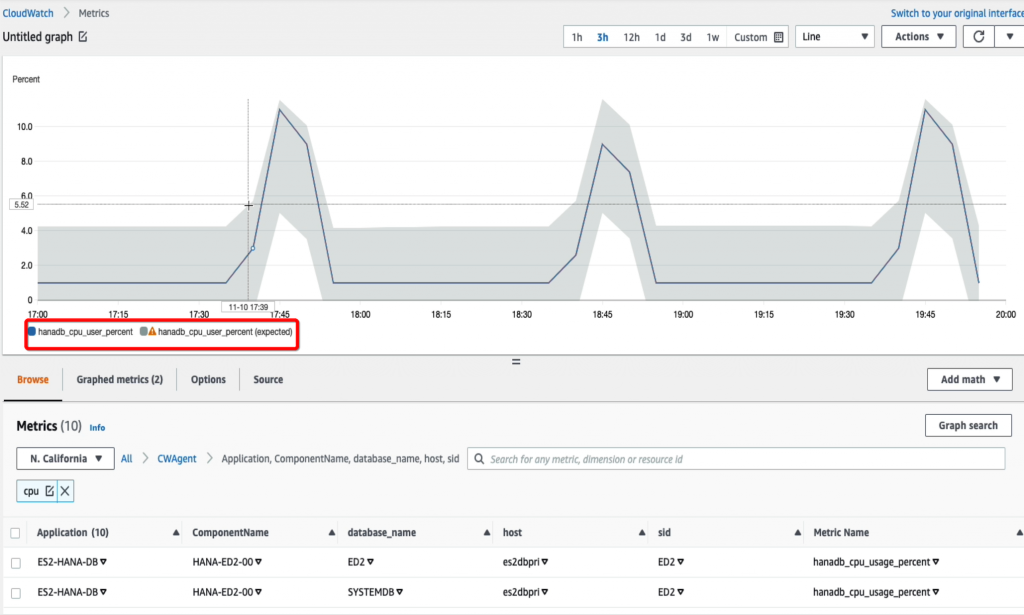AWS for SAP
Category: Management Tools
Simplify Operations for AWS Launch Wizard for SAP deployments using AWS Systems Manager for SAP
AWS Launch Wizard for SAP allows customers to automate the deployment of SAP applications such as SAP S/4HANA. It also provides customers the ability to personalize their SAP systems with the help of pre/post configuration scripts. Pre-deployment configuration scripts run right after the instances are launched and baseline Launch Wizard configuration activities – such […]
Automate incident management for SAP on AWS
Introduction Amazon CloudWatch Application Insights helps you monitor your applications that use Amazon Elastic Compute Cloud (EC2) instances along with other underlying AWS resources. It identifies and sets up key metrics, logs, and alarms across your application resources and technology stack by continuously monitoring metrics and logs to detect and correlate anomalies and errors. When […]
Licensing Optimization for SAP Applications with Amazon EC2 CPU Options
Introduction SAP offers multiple products with different licensing options for customers. An example is SAP BusinessObjects (SAP BOBJ) which supports Concurrent Sessions (CS) / Concurrent Access License (CAL), Named User (NU) and CPU License types. Understanding the different license options available is important for customers to optimize their costs when running in AWS. When customers […]
Monitor SAP Applications using Amazon CloudWatch Application Insights
Introduction SAP applications support critical business processes and therefore, customers require a comprehensive view of their SAP applications’ health and actionable insights to maintain the highest levels of security, availability, and performance. Since 2019, Amazon Web Services customers have been using Amazon CloudWatch Application Insights to monitor applications like Microsoft SQL Server databases and .NET-based […]
Monitor and Optimize SAP Fiori User Experience on AWS
Introduction SAP Fiori is the user interface component of modern SAP applications such as S/4HANA, which enables business users to execute their business critical processes within SAP. It is based on SAP’s own HTML5 implementation called SAPUI5 and relies on the HTTPs protocol and modern web browsers as the client. As you are operating SAP […]
Set up observability for SAP HANA databases with Amazon CloudWatch Application Insights
Introduction SAP applications support mission-critical business processes, so customers want to be able to identify and resolve issues impacting their SAP HANA databases quickly. However, SAP workloads have unique requirements and consumption patterns, and getting HANA-specific intelligence can be complex. Further, when issues are identified, finding root cause can also be difficult. Since 2019, AWS […]
Automate Start or Stop of Distributed SAP HANA systems using AWS Systems Manager
In recent blogs, we’ve discussed the advantages of DevOps for SAP for both build and operations and explored using AWS Chatbot to initiate Stop/Start. Today we help you fast-track the use of AWS native services for SAP operations by open-sourcing an AWS Systems Manager based solution that will Start and Stop distributed SAP HANA landscapes […]
Automating SAP HANA Installations on AWS with DevOps
Introduction In our first blog, Terraform your SAP Infrastructure on AWS, we began the SAP on AWS DevOps journey by defining the SAP infrastructure as code (IaC) . By doing this, we demonstrated with our Terraform modules here on GitHub and here on the Terraform Registry, by defining SAP as code, infrastructure and servers can quickly be deployed […]
Audit your SAP systems with AWS Config – Part II
Introduction In part I we discussed how to use managed AWS Config rules to automatically audit and assess the of your SAP landscape. We provided a solution to ensure your EC2 instances are configured per SAP best practices. At present, AWS offers more than 160 such managed rules in its North Virginia Region. Along with […]
Audit your SAP systems with AWS Config – Part I
Introduction Customers who run SAP on AWS can take advantage of a broad set of additional services that can enhance and simplify the operations of running SAP. Often, one such tedious task is to validate that your SAP systems are configured according to best practices, meet the requirements for vendor support, and meet internal audit […]









